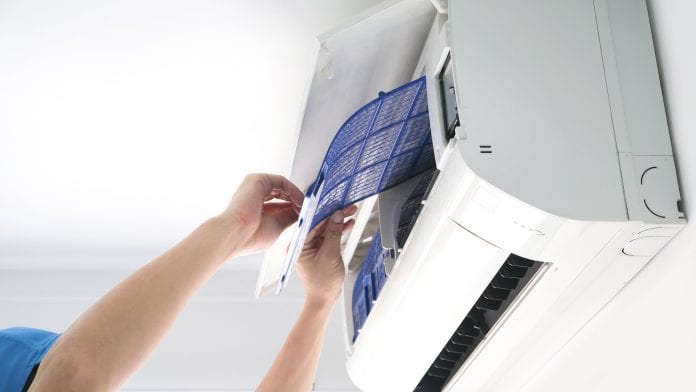
A group of researchers are calling for a ‘paradigm shift’ in indoor infection control methods to combat airborne pathogens including COVID-19.
The international group of air quality researchers is demanding universal recognition that infections can be prevented by improving indoor ventilation systems. They have called on the World Health Organization (WHO) to extend the indoor air quality guidelines to include airborne pathogens and to recognise the need to control hazards of airborne transmission of respiratory infections.
The call has been published in the journal Science.
Airborne pathogens indoors
QUT air-quality expert Distinguished Professor and director of QUT’s International Laboratory for Air Quality and Health, Lidia Morawska, along with 40 researchers from 14 different countries have called for a shift in standards for ventilation requirements which they say is equal to the scale of transformation undertaken in the 1800s when clean water and sewerage systems were implemented in cities.
Professor Morawska said that globally, the monthly harm from COVID-19 had been estimated as $1trn (~€0.82trn).
Professor Morawska said: “We need to establish the foundations to ensure that the air in our buildings is clean with a significantly reduced pathogen count, contributing to the building occupants’ health, just as we expect for the water coming out of our taps. Mandated building ventilation standards need to include higher airflow, filtration, and disinfection rates, and monitors that allowed the public to observe the quality of air around them. We should have virus-free air indoors.”
“We’ve provided strong evidence that airborne transmission spreads infections, so there should be international ventilation standards that control pathogens. Most minimum ventilation standards outside of specialised health care and research facilities only control for odour, CO2 levels, temperature, and humidity. Ventilation systems with higher airflow rates and which distribute clean, disinfected air so that it reaches the breathing zone of occupants must be demand controlled and thus be flexible.”
Ventilation systems should also be demand-controlled to adjust for different room occupancies, says Morawska, as well as differing activities and breathing rates, such as exercising in a gym versus sitting in a movie theatre.
“For decades, the focus of architects and building engineers was on thermal comfort, odour control, perceived air quality, initial investment cost, energy use, and other performance issues, while infection control was neglected,” Professor Morawska added.
“Buildings consume over one third of energy globally, much of it expended on heating/cooling outdoor air as it is brought indoors. While building designs should optimise indoor environment quality in terms of health and comfort, they should do that in an energy-efficient way in the context of local climate and outdoor air pollution. Wide use of monitors displaying the state of indoor air quality must be mandated too, because the general public currently have no way of knowing the condition of indoor spaces they occupy and share with others. Visible displays will keep building operators accountable for air quality. The public should be aware and demand safe environments.
“None of this means that every indoor space should become a biosafety facility, but a building should be designed and operated according to its purpose and activities conducted there, so that airborne infection risk stays below an acceptable level.
“The cost of infections come from different pockets – building and operating costs, health care costs – but ultimately, society pays for all the costs so a cross-system reallocation of budgets must also be facilitated to mandate new ventilation standards. The benefits are beyond infectious disease transmission. Improved indoor air quality may reduce workplace absenteeism, sick building syndrome, and allergic reactions. The reduction in productivity losses alone may cover the cost of any ventilation changes.”
























